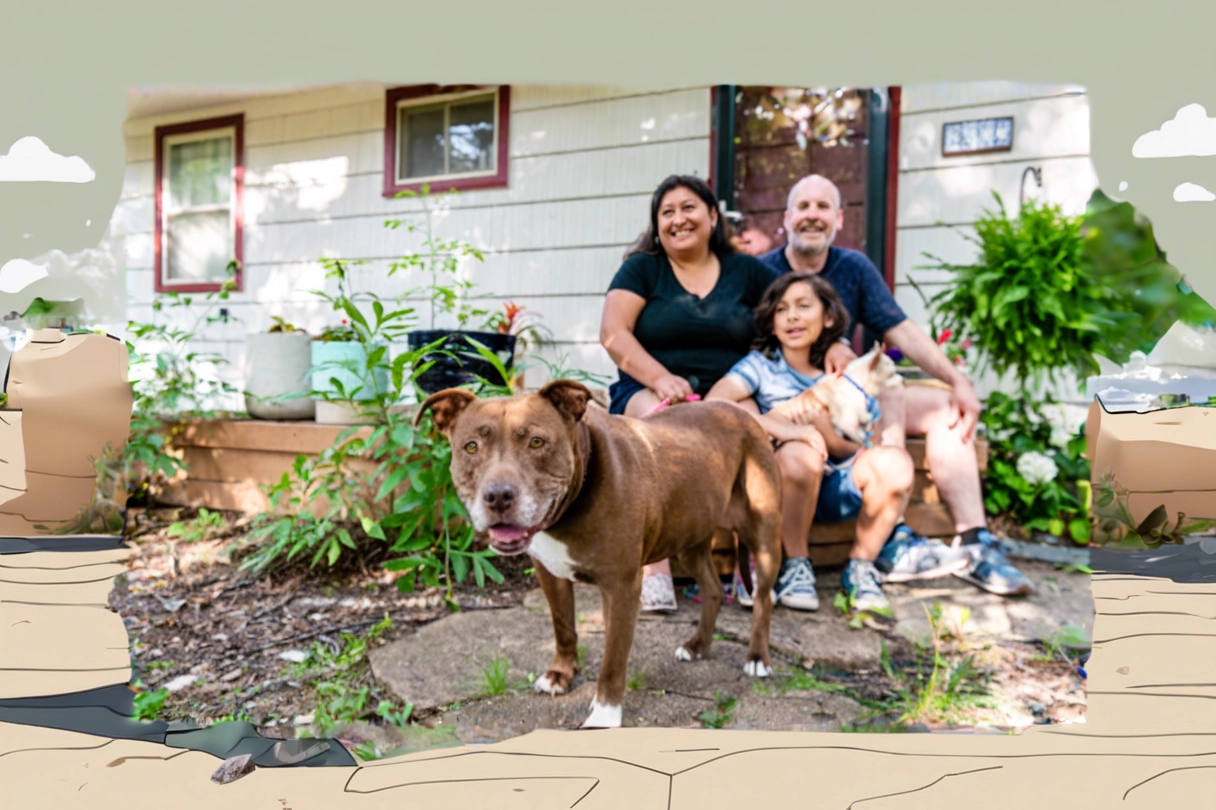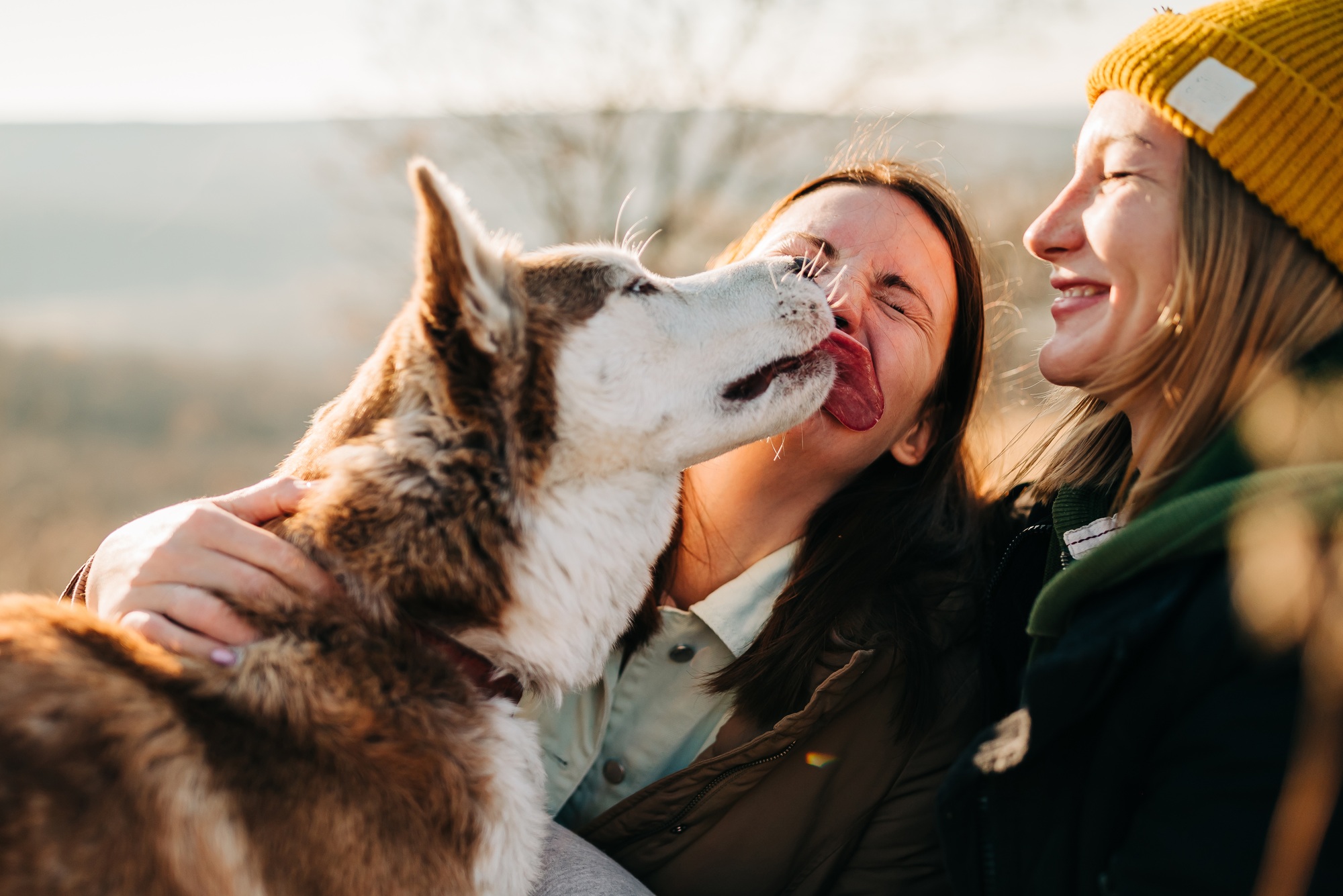When a serious dog bite incident hits the news, the person bitten will sometimes report that the dog bit “without warning,” but this is very unusual behavior among dogs. At least it’s unusual in the sense of a dog lashing out in some way without having given some indication that he was uncomfortable in the situation. It’s much more likely that the person wasn’t able to read or didn’t notice the signal the dog was sending before the bite, or even that he felt reduced to a pre-emptive strike because the person had a history of forcing him into icky, scary situations.
Fear trumps everything. This is one of the most important principles to absorb in understanding motivation and behavior. Fear of any intensity is more powerful than hunger or thirst, or the need for shelter or social contact, or affection. And it should go without saying that trying to press physical comforting on a dog with any nervousness about people is cruel in the extreme. Any animal, whether homo sapiens or canis familiaris is subject to panic if they find themselves in a scary situation with no avenue for escape.
Panicky behavior is unpredictable. It’s intense and irrational. This is why one of the greatest drowning dangers for humans happens when the panicking swimmer is close enough to his rescuer to grab on and against all reason manages to drown them both. If the swimmer sees the rescuer as preventing him from getting out of the water, imagine what he might be willing to do. Dogs are no exception. This is why the bare minimum level of kindness requires us to recognize and respect a dog’s signals that he finds a situation scary. We may know that the dog’s scary monster is actually no danger to him. This is completely irrelevant. Only his fear matters. One of the most easily recognizable fear signals is avoidance. When a dog repeatedly gives something a wide berth or averts his gaze from it or goes to exit points, you can be pretty confident that he is afraid of something. But these signals can be subtle and don’t necessarily tell us much about the intensity of the fear, right up to the point where it becomes panic because we didn’t provide an escape from the pressure cooker.
The well-known animal trainer, Kathy Sadao, puts it beautifully when she says, “We must always give our animals the option to say ‘no, I can’t do that right now,’ when we are asking them to do something brave.” This is from a person who worked successfully with a captive walrus who had considered any and all humans in his vicinity to be an imminent threat to life and limb. She should know.
I have fostered many Greyhounds from the rescue organization my dogs came from. A few were so fearful that they were mightily reluctant to come out of their crates, the only relative safety zones they had known in their track lives. If pressured or pushed to come out, a few of these already few might growl or snarl or snap or even skip these warnings and go right to the bite. The only humane way to help them was to offer bits of goodies at gradually increasing distances from the crate while standing well clear and always, always, leaving the crate door open. The standing clear part was to reassure the dog that I wasn’t tricking him with the treats only to rush in and close him out of the crate if he came out. I never met one who failed to lose interest in the crate over time. It became completely ho-hum because it was permanently available.
Dogs often rely on what I can only call appeals to our sympathy when what they feel threatened by is us. Ignoring or being oblivious to these signals can lead to a bite as directly as pushing forward in the face of growling and snarling can. These appealers are dogs who use what’s called “appeasement” in behavior speak. Dogs consistently and eloquently communicate their fear. They crouch, curl their bodies, avert and lower their heads, lick their lips, pant, and yawn when they aren’t tired or thirsty and otherwise use every signal that another dog would immediately translate to, “please don’t hurt me.” We know that these behaviors are true signals, not simply internal fear reflexes, because if there is no audience—no potential receiver of the message present, they are rarely expressed. If pressed, in other words, if their attempts at communication are ignored, particularly if they have no retreat option, some of these dogs will then go to overt warning signals; some will go directly to biting.
And of course, dogs as a species have a substantial repertoire of warning signals, what a great trainer friend of mine likes to call “please don’t make me bite you,” signals. These include growling, snarling, snapping, and what people in dogs call a “hard eye,” the doggy version of a dirty look. They use all of these—up to and including inhibited biting—in an effort to “increase social distance,” as the behaviorist puts it. They are attempts to persuade whoever they see as a threat at that moment to go away.
They direct these signals at us when we scare them and at other dogs, although of course, other dogs are more adept at picking up the signals—it’s their native language after all. This warning language is extremely useful in preventing a conflict from escalating to full-out fighting, which is why it tends to be very fully developed in very social species who also have the ability to hurt one another. Its existence explains why the noted behaviorist, Dr. Ian Dunbar—the guy credited with having invented puppy socialization classes—is fond of asking the rhetorical question, “What do I say to the big dog growling at me?” and answering himself, “I say, thank you!” It’s a behavior that is worthy of thanks because it gives us the opportunity to respond to the doggy version of, “I don’t like that; cut it out!” by stopping what we’re doing and moving away before things escalate. Then we can decide whether we want to work on helping the dog to be less worried about whatever was going on before he responded. Applying this principle of giving the dog a choice protects us and them from the distress and—rarely–even physical harm that could result if we misread their signals.
Sometimes, however, people make the very serious mistake of punishing the dog for warning or people simply fail to retreat and continue to do whatever they were doing in the face of the signals. So then we have a dog who has learned that bad things will happen to him if he growls, snarls, or snaps or that these tactics simply don’t work for him, but he’s still worried about whatever provoked him to issue these warnings in the first place. It doesn’t matter whether it’s a real danger to him, just that he perceives it that way. We have thus trained him to go right to biting to defend himself, without any preliminaries. And of course, we have no way of knowing whether this kind of learning has taken place unless we’ve been with an individual 24/7 since he was born.
So the next time you hear a dog described as biting “without warning,” take a minute to wonder what the dog may have actually said and to realize that unless you were actually there and are skilled at reading canine body language, you cannot know.







